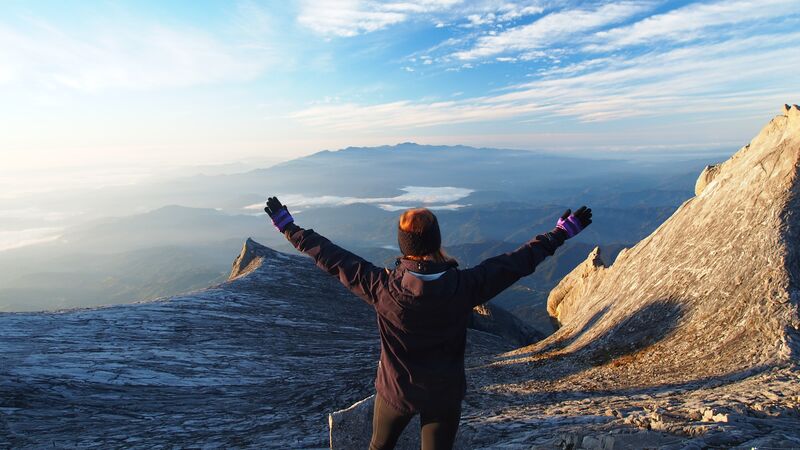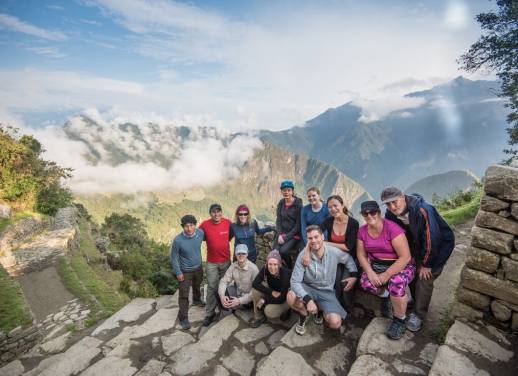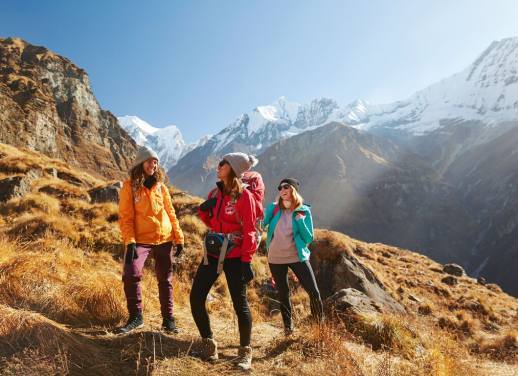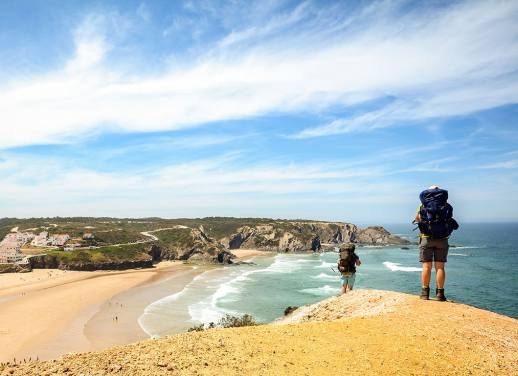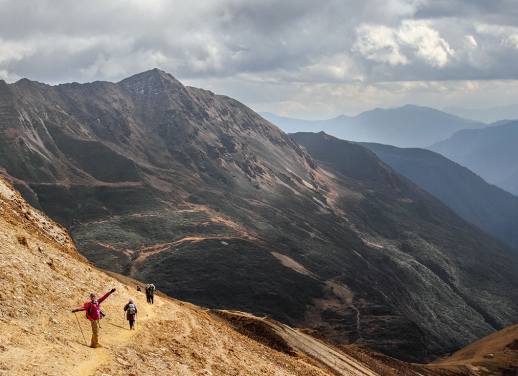Follow these steps (pun intended) to get fit for your walking holiday.
Whether you’re a newbie about to do your first multi-day walk or a seasoned hiker embarking on a bucket-list trek in Nepal, training is crucial. There’s no need to be professional athlete kinda fit, but you want to be fit enough so that you can focus on gobbling up the views rather than shushing the negative voice in your head every time you approach a hill. Training can also help you prevent injury.
Below are a few steps to help you prepare for your walking trip. Ready? Let’s go.
#1. Define your goal
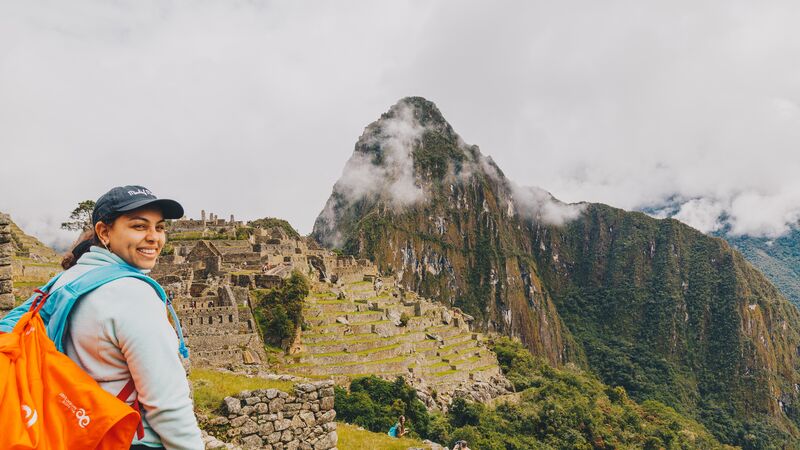
First, determine the type of walking you’ll do on your trip. Rambling the English countryside is quite different to conquering Everest Base Camp! Here are a few questions to steer you in the right direction:
- How many days will you hike for?
- What distance will you cover (in total and each day)?
- Are there any rest days?
- Will you carry a pack with all your gear or will you have a porter?
- What’s the terrain like?
- Is there any elevation gain?
Once you’ve answered these questions, you’ll better understand how fit you need to be to succeed (and have fun while you’re at it).
#2. Be honest about where you’re at
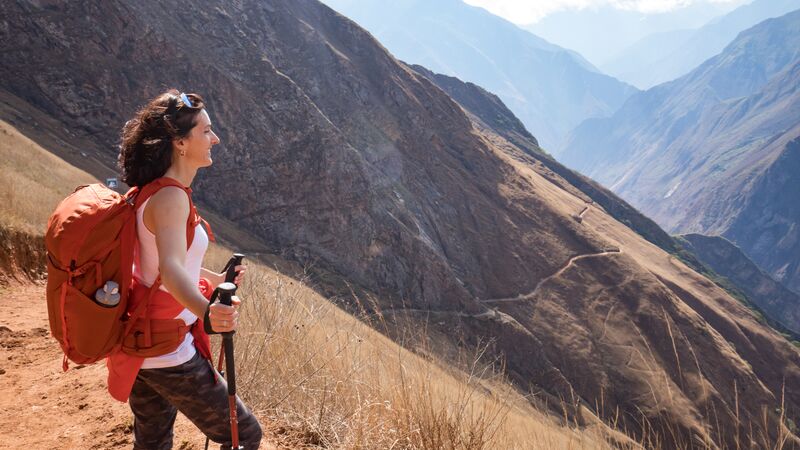
Where’s your fitness at right now? Maybe you go hiking or running regularly but haven’t done a side plank in years. Or perhaps lifting weights is no sweat off your back but you steer clear of the treadmill at all costs? You might even be rebooting your fitness journey after a hiatus (good on you). No matter where you’re at, be honest with yourself to ensure the training plan you commit to is adequate to reach your goals.
As a general guide, you should begin training 3-4 months before your trip. If this is your first long hike or you haven’t trained it a while, you may feel more comfortable starting six months or longer out from your start date.
#3. Ramp up your cardio
Hiking gets your ticker tocking, so incorporating lots of cardio into your workouts will help your body use oxygen more efficiently. In other words, it’ll help you reach the top of a hill without too much huff and puff, and you’ll be able to recover quicker between challenging stretches.
It’s no surprise that walking is one of the best cardio exercises to prepare for a hike. You’ll build muscle (and muscle memory) for the movements you’ll be doing on your trip, toughen your feet and lubricate your joints. But you don’t just want to walk around the block. Aim for various terrain within your reach and get a good amount of up and downhill practice too. If you’re trekking with a pack, wear it when you train and build up to the weight you intend to carry.
Tip: embrace the elements! It’s easy to curl up indoors when it’s raining instead of going out for a walk, but it’ll do you good to prepare for inclement weather. Depending on where you’re going, you may need to prepare for all seasons.
#4. Don’t forget about strength
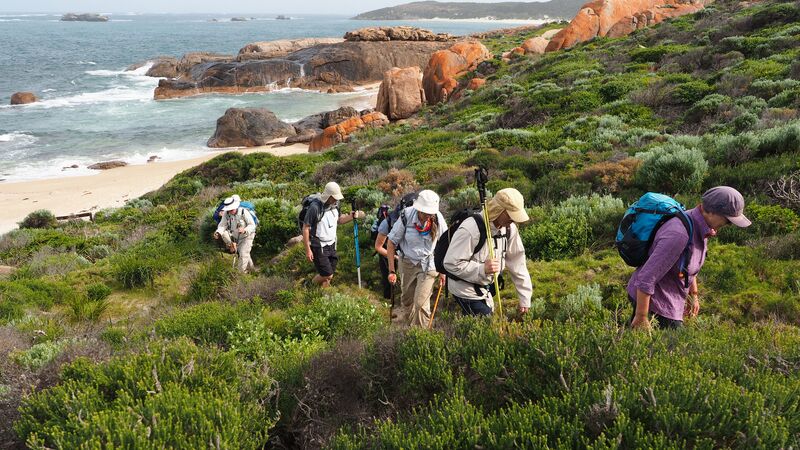
Increasing your strength is never a bad idea, but especially if you’re going to climb a steep mountain or carry your own gear. Strong muscles reduce the energy required to move, protect your joints and improve your stability so that you can take on tricky terrain confidently. A strong, stable body = less chance of injury.
Focus on your legs of course, but don’t forget about your arms, shoulders, core and back. Carrying a pack is taxing on your upper body! Below are some exercises to start with:
- Squats
- Squat jumps
- Lunges (forward and back)
- Bridging
- Calf raises
- Step-ups
- Step-downs
- Planks and side planks
- Tricep dips
- Push ups
#5. Be consistent
How often you should train depends on your goal and current fitness level. In an ideal scenario, go for a couple of big walks a week, gradually building up the frequency, distance and pace. If you can’t hit the trails, aim for three sweaty, heart-rate-elevating workouts a week. Also try doing a few similar length walks a couple of weeks before your trip.
Aim for two strength training sessions a week. Pick a handful of exercises from the above list and do a mix of low and high-repetition activities to build strength and endurance. YouTube is packed with great home workouts if you don’t have access to a gym or weights. Over time, you should be able to increase the reps and/or weight.
Don’t forget to warm up, cool down and stretch through your calves, hamstrings, glutes and hip flexors. Stretching reduces muscle tension and stiffness. Plus, it feels really good.
#6. Break in your boots and test your gear
If you’ve bought new boots, please, PLEASE, break them in before your trip. Blisters are not fun – especially when you’re ascending a mountain where there’s no Wi-Fi, let alone a chemist. You should also take your walking poles and any other specialised hiking gear for a test drive walk to ensure you’re nice and comfortable by the time your trip comes around.
Read more: How to break in new hiking boots
#7. Commit to your goal
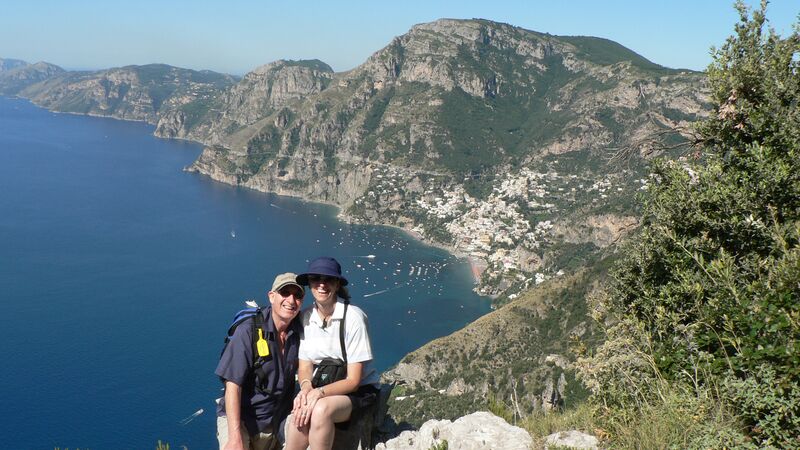
Committing to your training plan not only builds physical endurance, but also increases your mental stamina. When you’re in the wilderness and you’ve been walking for hours and hours, it’s often the mind that’ll drift and drag you down… not your weary legs! All sorts of nagging and negative thoughts creep into your head: When’s the next rest? Jeez, how many more kilometres to go? This pack is so heavy; why did I bring so much stuff! The self-discipline and mental stamina you build while getting up early for a walk or going to the gym despite wanting to mooch on the sofa will help you soldier on when the going gets tough.
If you’re feeling overwhelmed and still don’t know where to begin, you can always seek expert advice tailored to your needs from a personal trainer.
And remember, every journey begins with a single step. So, what are you waiting for?
Ready to hit the trails? Check out our range of walking, hiking and trekking trips.

